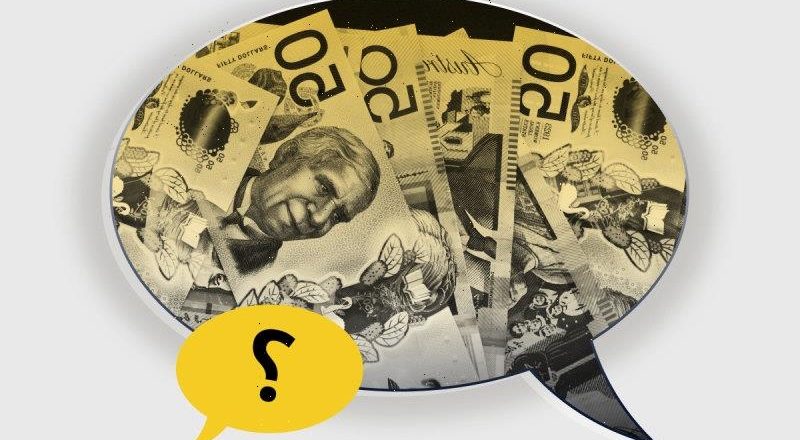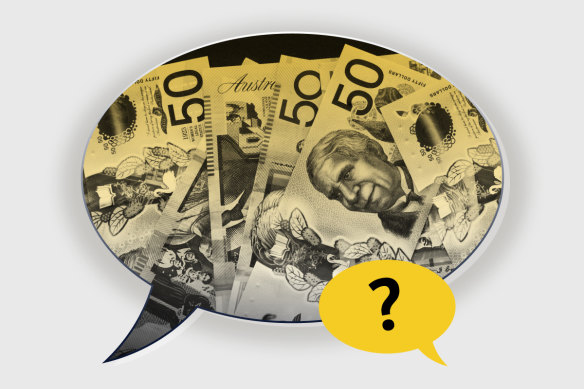Where would you cut spending or increase revenue to reduce Victoria’s debt?
Our readers want us to examine how to get the state budget under control, so we will quiz both sides of politics about what levers they intend to pull to shore up the state’s battered finances.
The pandemic led to a hike in government spending and borrowing to save lives and ward off economic disaster, but a key question for voters ahead of the election is how the government can pay for promises with state debt heading to historic highs.
Through our Victoria’s Agenda project, we asked what political parties and candidates should be talking about when competing for votes. While issues like health and integrity was of higher concern than the economy and debt in some of our consultations, they did come up often. A survey of 1107 voters by The Age’s polling company Resolve in August and September found 16 per cent nominated “economic management and recovery” or “managing the state’s finances” as their highest priorities. That was as high as health, and only the cost of living – at 20 per cent – was higher in that poll.
As one man in the 45 to 54 age bracket put it: “We’ve got to lower government debt and start to control the purse strings. We’re setting ourselves up for a massive fall down the line.”
Another reader, also aged over 45, said his he wanted political parties to talk about “how they intend to bring down the eye-watering $167 billion Victorian debt. What are their key priorities and precisely how will they be funded?”
When we asked our readers what they wanted parties to talk about, many replied with one word: “economy”. One said they wanted “a detailed explanation of the budget and how all spending will be covered”. ?
“Addressing the state’s massive debt” was another.
The extent to which Victoria’s debt matters, and the longer-term challenges we face paying it back, is contentious – and we’ll be unpacking it in the coming weeks.
Credit:
How much do we owe?
The Andrews government has never shied from borrowing to build things, just as it has shown a willingness to add targeted taxes, such as its mental health levy, to pay for social policy reforms.
Most of Victoria’s debt is managed by the Treasury Corporation of Victoria, which issues state government bonds to raise cash. Debt is often expressed in net terms, which factors in any offsetting financial assets such as shares. And it can be shown as a proportion of the economy (gross state product), which allows us to accurately compare debt levels over time without having to worry about the impact of rising prices (inflation).
Even before the pandemic, Victoria’s net debt was rising. In the financial year when Labor came to power (2010-11), the state owed about $11.8 billion in net terms, equivalent to just 3.6 per cent of gross state product (GSP).
Borrowing has its limits. At some point, the money has to be paid back, with interest.
By 2018-19, just before the pandemic derailed the state economy, net debt had leapt to $25.5 billion, as the government ramped up its ambitious infrastructure agenda. That was equivalent to about 5.5 per cent of GSP.
But by the end of 2021-22, net debt had quadrupled to $101.9 billion, or 19.8 per cent of GSP. According to the predictions in this year’s budget, by 2025-26 it will hit $167.5 billion, or 26.5 per cent of GSP, the highest since the early 1970s. And that’s before factoring in any new spending (and borrowing) needed to finance new building projects announced since the budget in the shadow of the election, including billions for new and upgraded hospitals.
So, net debt is rising. Does it matter?
Debt isn’t necessarily bad. The idea is that governments borrow more cheaply than the private sector, with big social objectives in mind that wouldn’t necessarily be delivered by the private sector.
Debt, for example, might be used to pay for schools, hospitals or public transport projects that generate bigger social returns over the longer term than the cost of the borrowing.
Likewise, it’s hard to argue with government borrowing during a crisis such as a pandemic, particularly if the funds are targeted to save lives or to protect jobs and businesses. Indeed, using the might of the government’s finances to smooth out economic bumps is one of the key roles of government. It’s called fiscal policy.
The idea is that during a downturn the government ramps up spending (and borrowing) by letting the budget go into deficit, pumping money into the economy. During the good times, it withdraws money by raking in more tax revenue than it’s spending, running surpluses and paying back the money it owes. That’s the theory.
But borrowing has its limits. At some point, the money has to be paid back, with interest. It adds to the annual cost of running the government, and when a government starts to struggle to meet the interest bill, it’s entering a danger zone.
What is Victoria’s situation then?
The annual interest bill is typically measured against revenue, which provides a sense of the government’s capacity to meet its financial obligations. According to the budget, in 2021-22 the interest bill on government debt cost taxpayers just over $3 billion, or about 3.7 per cent of total revenue.
When the budget was handed down in May, State Treasury predicted the annual bill on government debt would rise to about $6.4 billion by 2025-26, equivalent to about 7 per cent of total revenue. The Treasury says this level is “modest” and (according to the most recent budget) “well below the levels seen during the 1990s”.
The trouble is, interest rates are now being lifted by the Reserve Bank at the fastest pace for decades. State Treasury has already factored in some of this extra interest-rate pain. But if interest rates turn out to be one percentage point higher than its predictions, it would add, in net terms, about $2.5 billion to state spending over four years.
More than $1 billion of that added expense would hit the budget in 2025-26, potentially reversing the $650 million surplus expected for that year.
What should the government do, if anything, to get debt under control?
There are competing schools of thought on whether Victoria’s debt levels are a problem. The Andrews government argues the state will bounce back with enough economic momentum to carry the budget back to surplus, allowing the government to start paying back its borrowing.
The second view holds that two-and-a-half years of rampant spending and borrowing has left the state in a financially tenuous position. Under this scenario, Victoria is carrying unsustainable debt and ongoing spending, which will weigh down businesses with a burden of high taxes. The state government is currently collecting taxes equivalent to about 5.8 per cent of the state economy, the highest level since the late 1990s.
The view of some economists and business leaders, including some at a recent Victoria’s Agenda lunch, is that at some point Victoria will need to tackle the state’s budget challenges.
“We’re leaving our children with it,” said Tim Piper, the Victorian head of the Australian Industry Group. “The debt level underpins everything the government is able to do, and is relevant to every single one of us.”
Others are more sanguine. RMIT Emeritus Professor David Hayward said debt should be considered in the context of what it was used for, including saving lives and protecting jobs during the pandemic, and for productive infrastructure. Victoria’s interest bill was still relatively modest, he said, with much of the debt locked in at low interest rates.
The state opposition has promised to introduce a cap on the state’s debt levels, warning predicted net debt of $167.5 billion by 2025-26 would be more than the debt levels of New South Wales, Queensland and Tasmania combined. But so far, it hasn’t specified what its debt cap will be, arguing it needs a clearer sense of the state’s actual financial position.
The budget is not the same as the economy, although they are related. There are big challenges globally, and a debate about how state and federal governments work together. So far, both major parties have been reluctant to publicly air an economic reform agenda. Both are making big spending promises while only the opposition has offered savings, in the form of scrapping the Suburban Rail Loop.
You’ve asked us to examine these issues, and we will quiz all parties – and key Independent candidates – about what approach they will take to debt, and what levers they intend to pull to shore up the state’s finances.
Fascinating answers to perplexing questions delivered to your inbox every week. Sign up to get our new Explainer newsletter here.
If you'd like some expert background on an issue or a news event, drop us a line at [email protected] or [email protected]. Read more explainers here.
Most Viewed in National
Source: Read Full Article


